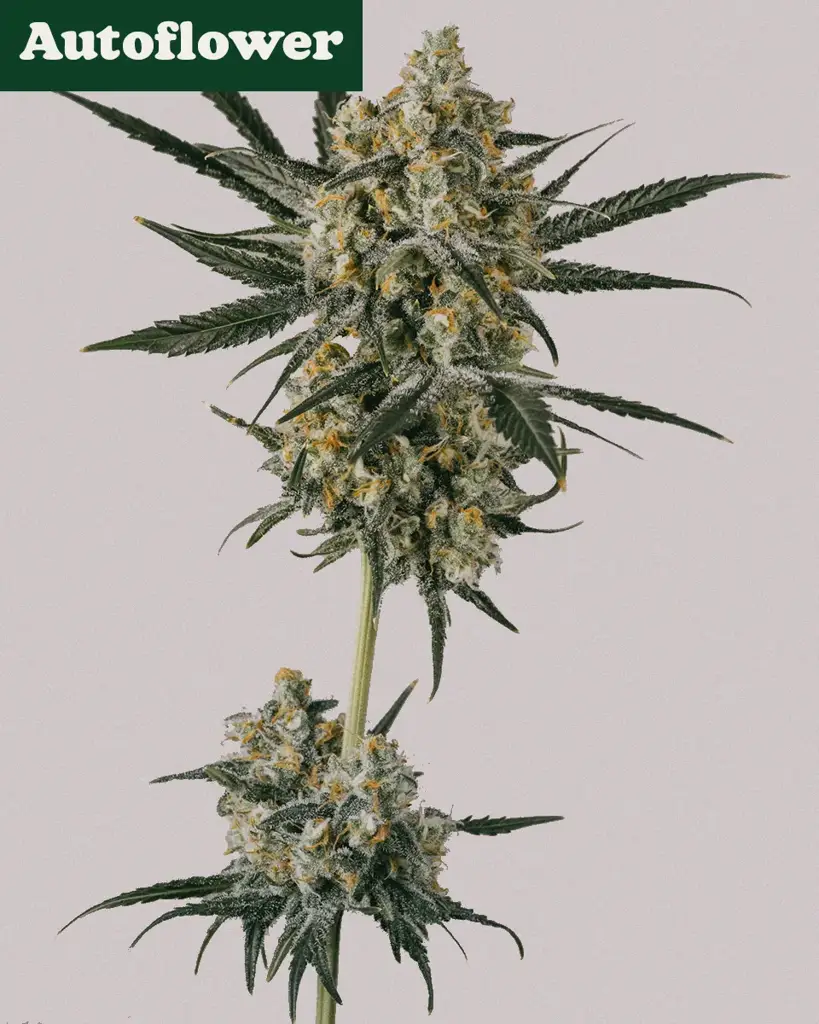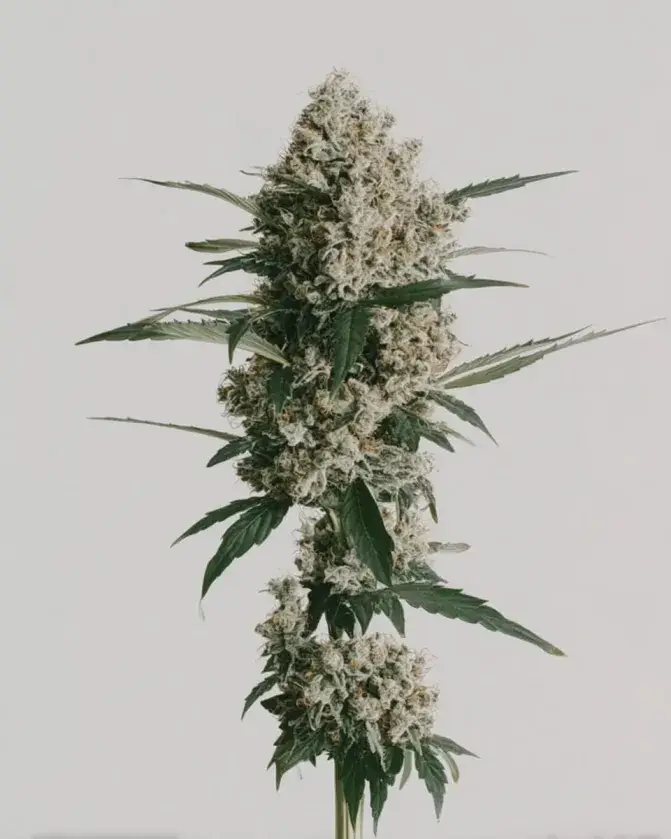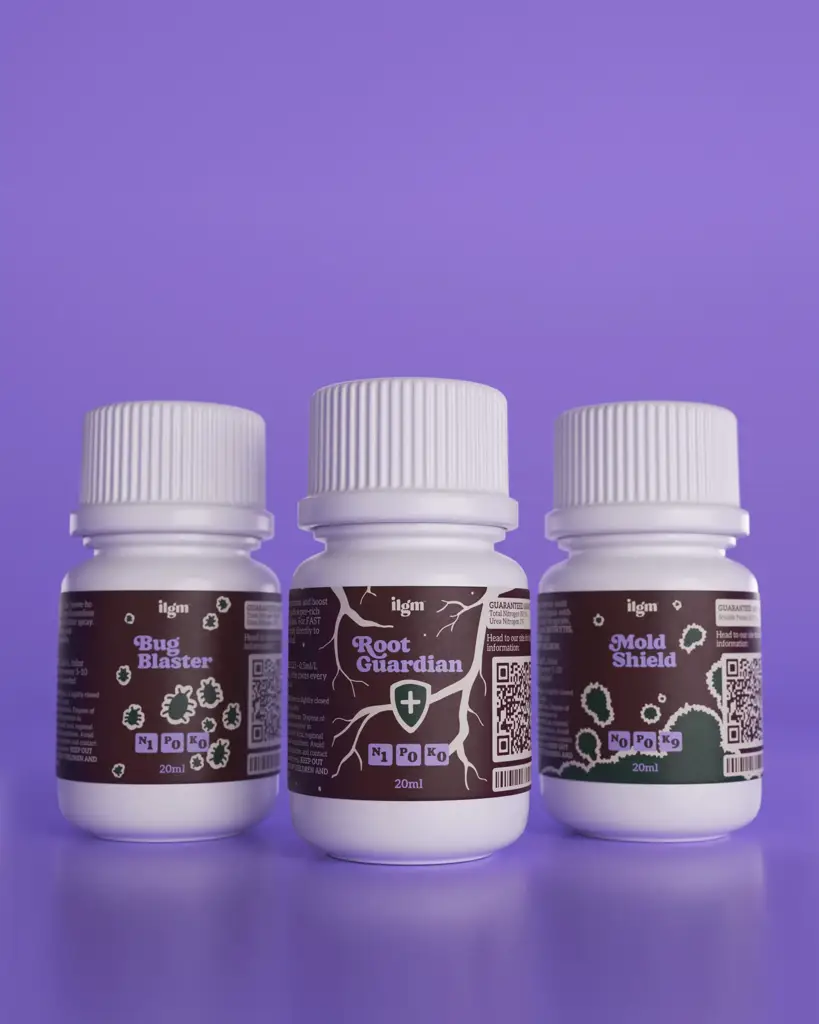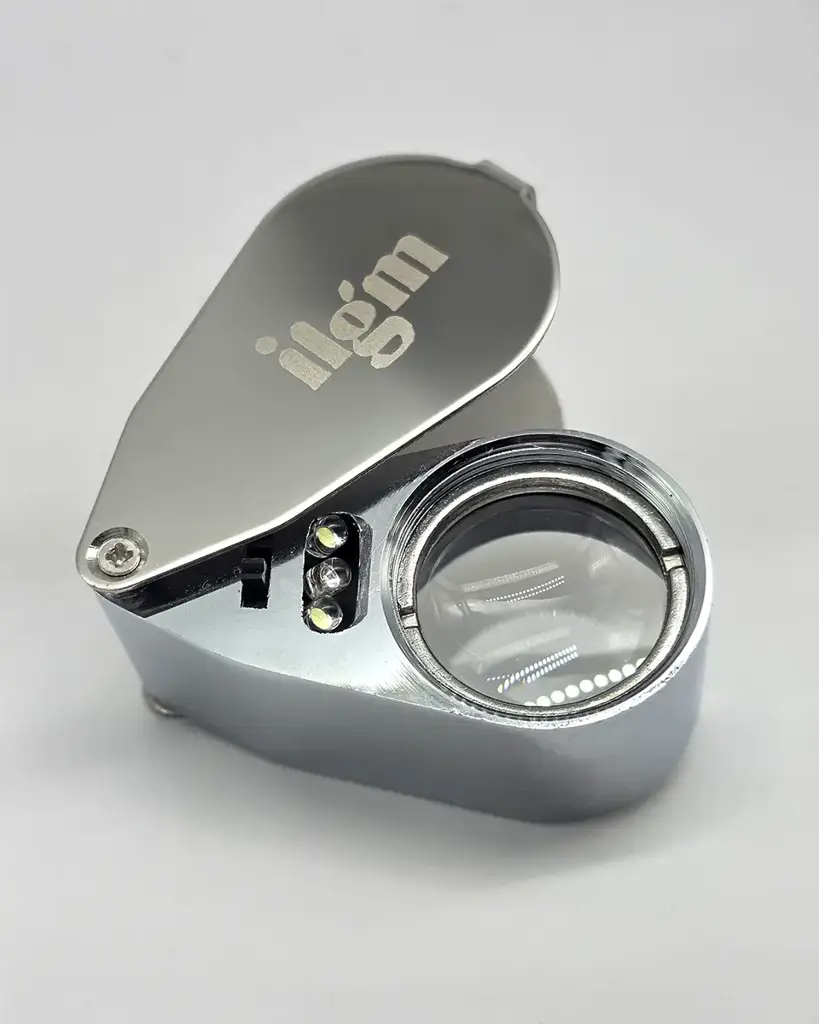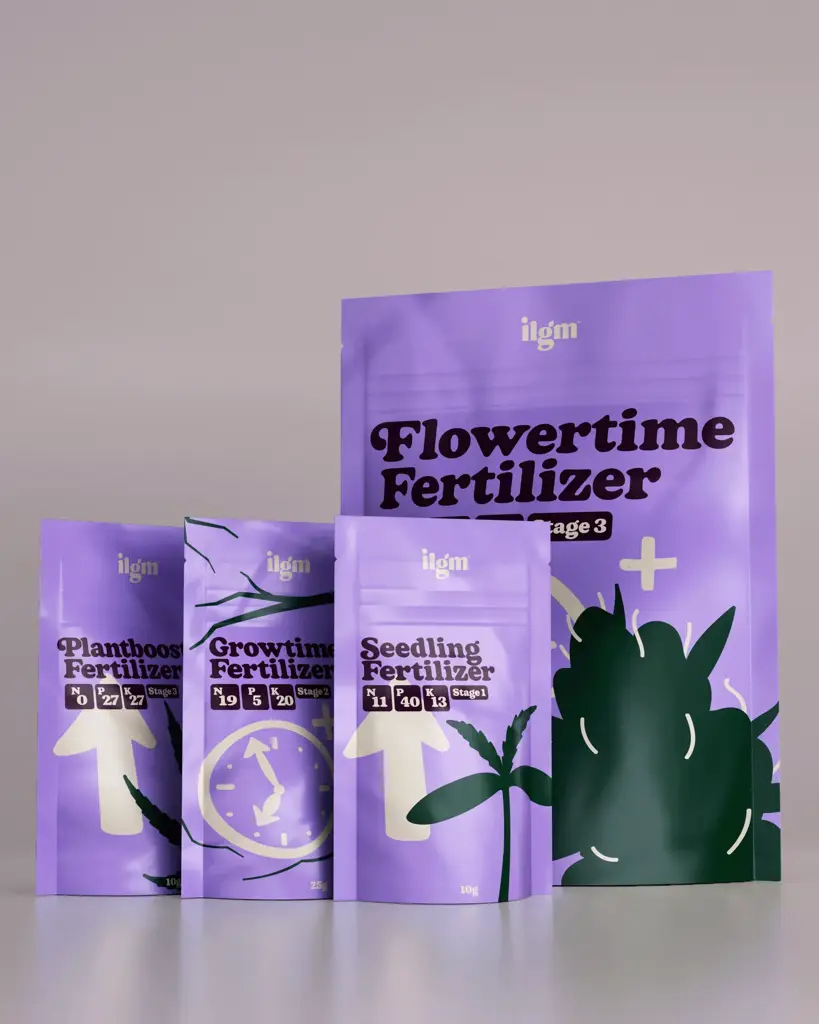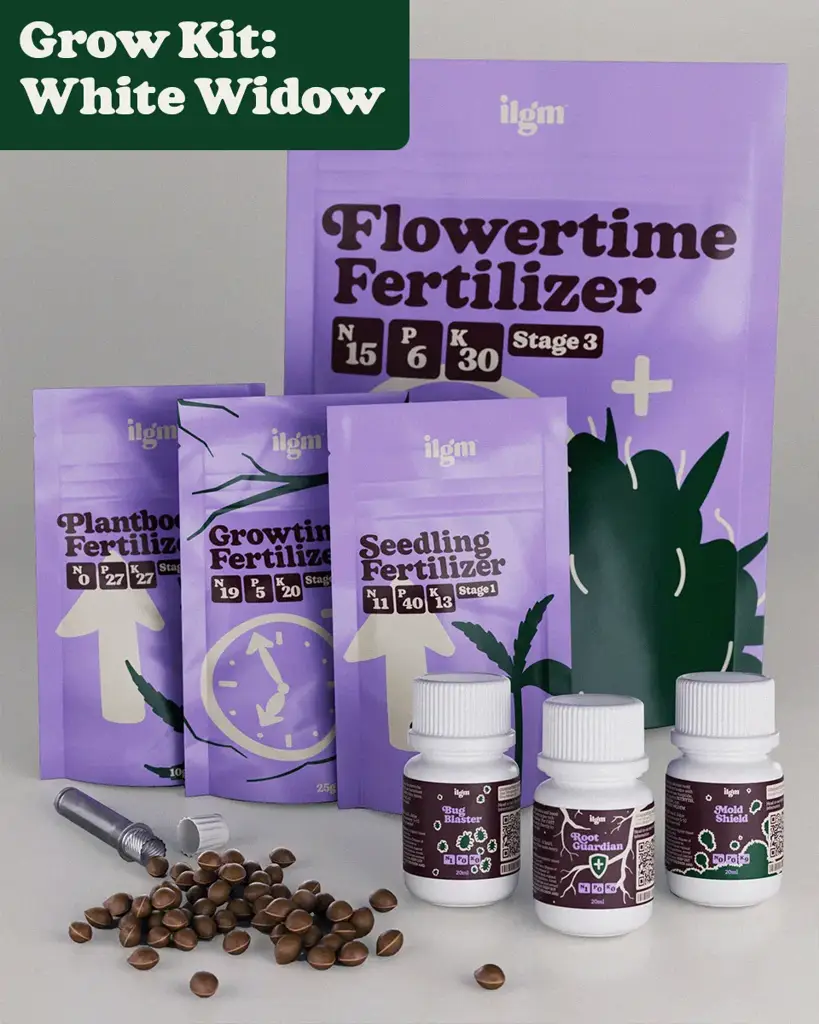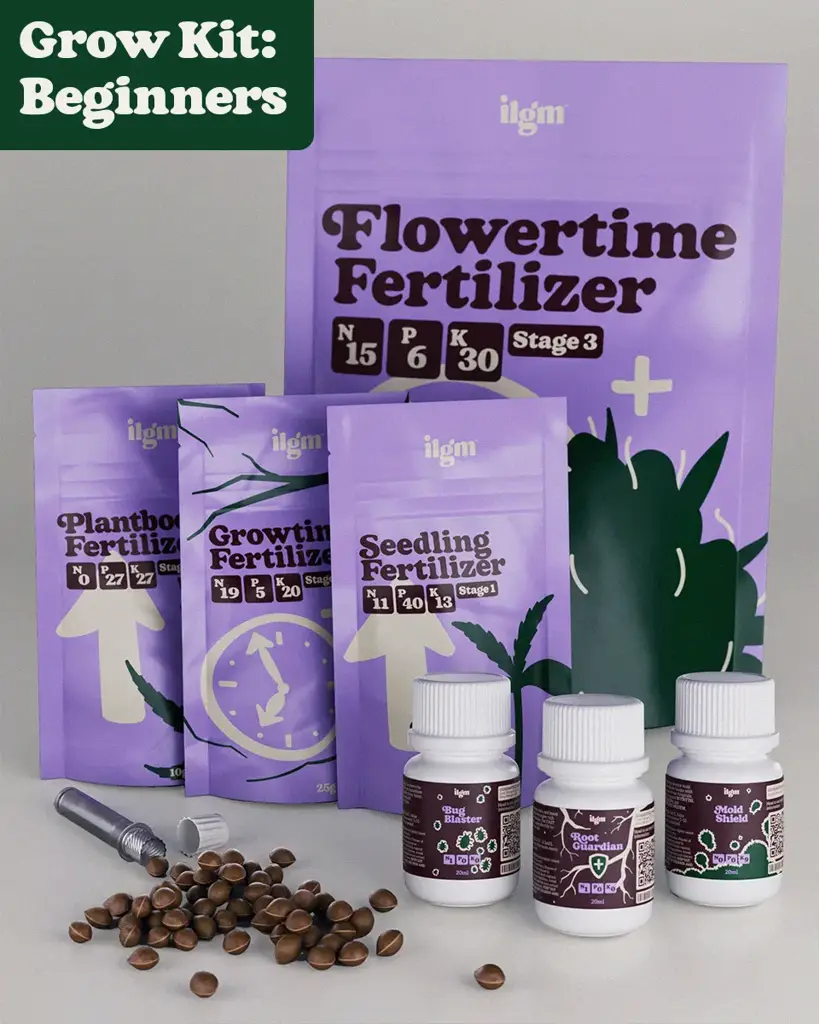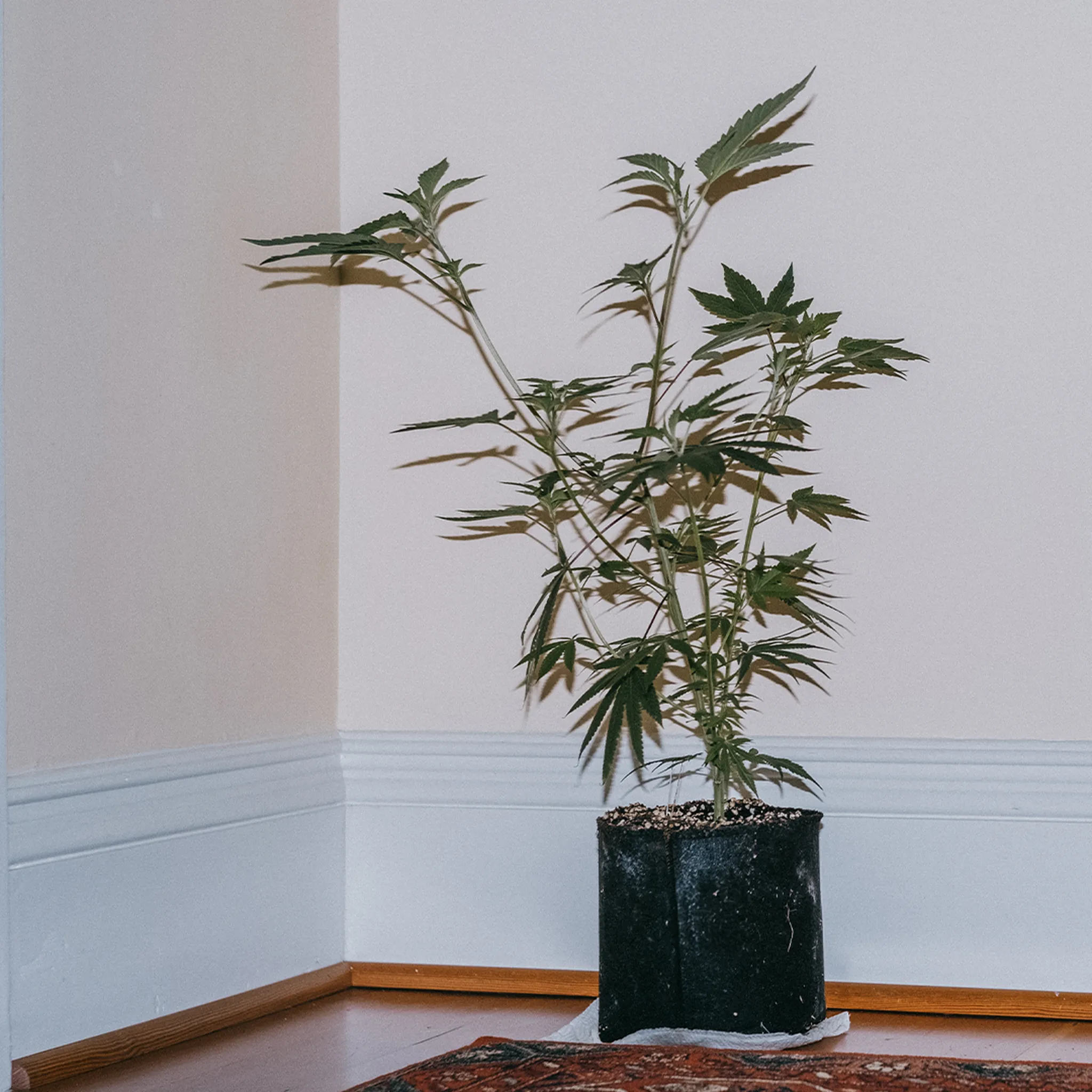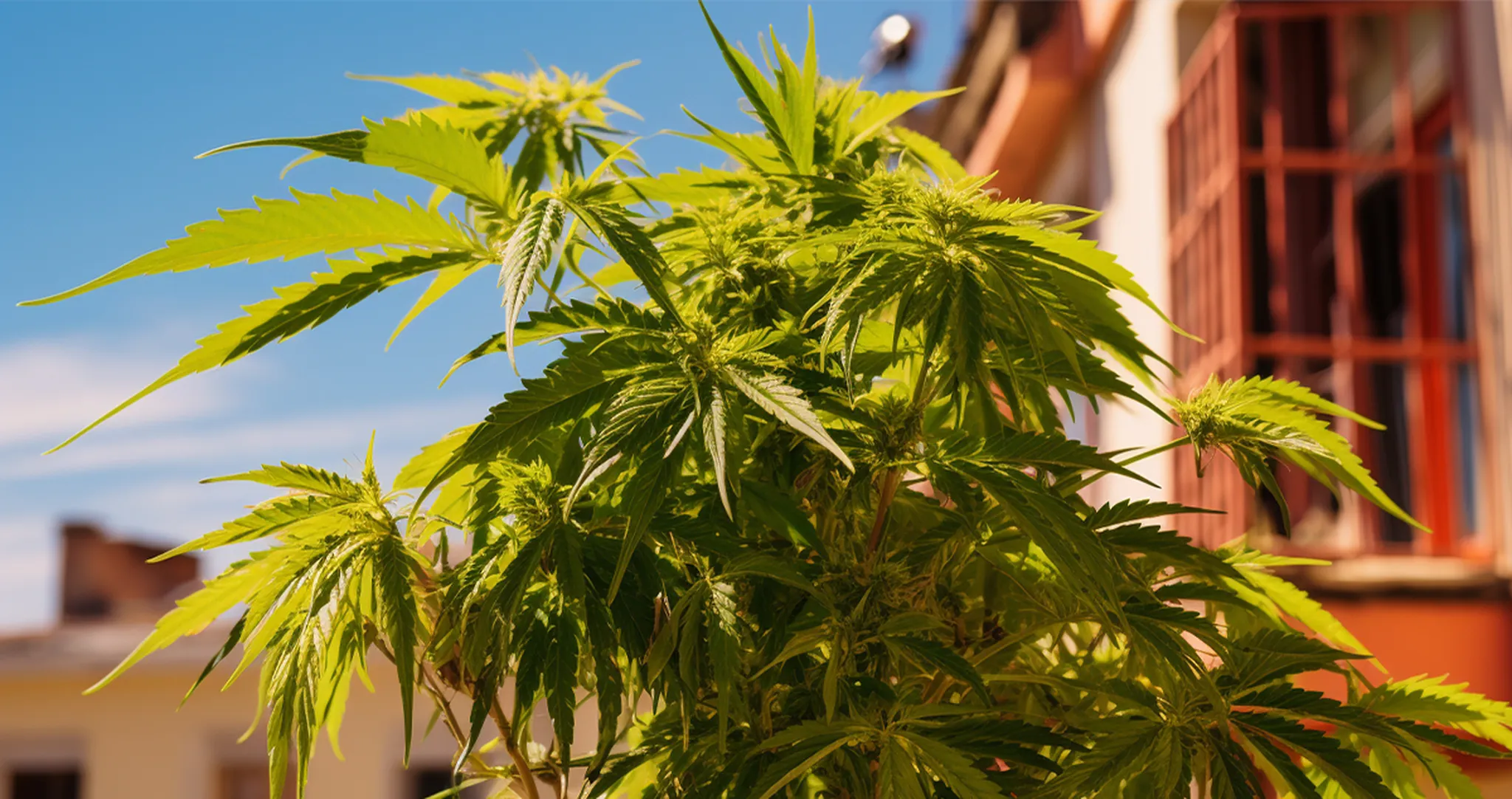
Powdery Mildew on Cannabis: Spot It, Stop It, Prevent It
What is Powdery Mildew and Why Should You Care?
Table of contents
Seeing spots? Hopefully, you’re reading this out of sheer curiosity – but in all likelihood, it’s because you have a nagging suspicion those fuzzy white blotches on your cannabis plant might be powdery mildew, which is not supposed to be there.
Like any health concern, it’s best not to cross your fingers and hope it goes away on its own (it won’t). Thankfully, this is a very common issue, and there are several beginner-friendly options for treating powdery mildew.
With a little work and the help of some products that are pretty easy to get, your garden should soon be back on track to yield lush amounts of high-quality bud.
What Is Powdery Mildew on Cannabis and What Causes it?
Powdery Mildew (“PM”) on cannabis plants is a disease caused by the growth of a fungus on the leaves and stems of cannabis. It blocks light and ruins surface cells, reducing photosynthesis and making the plant weaker.
Things powdery mildew likes include: high humidity, low light exposure, and cool temperatures (59-77°F/15-25°C). It also thrives when there’s extra nitrogen available, so don’t add more N in the hopes of promoting extra-fast growth to compensate for any leaves you might have to remove.
Not to freak you out, but there’s almost definitely one or more types of powdery mildew-making fungi (Erysiphales) in the air around you right now. It needs a nice place to anchor itself and start growing, and cannabis is an attractive choice.
Once one plant’s got it, you can bet it won’t be long before you see powdery mildew throughout your cannabis grow. It spreads quickly, mostly on the breeze, and often attacks young plants in their seedling and vegetative growth period.
What you definitely don’t want is an uncontrolled powdery mildew situation when you go into flowering. If you’ve already seen it (even if you haven’t), preventing powdery mildew in the later weeks of your plant’s life is crucial.
Some cannabis plants have a naturally greater ability to resist powdery mildew infection than others. If you’ve never had an issue before, don’t take it personally; it could just be you’re growing a more susceptible variety this time around.
Our Bestsellers
How to Spot Powdery Mildew (Early)
Start looking for powdery mildew on your plants right away – it can take a minute (more like a week) to become visible to the eye, so spotting infection even at the 2nd and 3rd week of life isn’t unusual.
You want to inspect the surface of the leaves for any sign of a white powder or even an unexplained, light-colored blotch – both early indicators of powdery mildew on cannabis plants. The infection quickly spreads out in all directions to make white patches. It might look like someone flicked a paintbrush and left a bunch of gritty white spots of different sizes on the plant.
 Powdery Mildew in an early stage
Powdery Mildew in an early stage
Using a criss-cross of fast-growing tiny threads, powdery mildew will soon take over the entire surface, tracing the hills and valleys of a leaf until the entire thing looks like it got dusted like a donut.
 Powdery Mildew in a late stage
Powdery Mildew in a late stage
Assess the damage: can you see active PM on every leaf? A very infected plant, which can’t afford to be stripped of its obviously-diseased parts, is probably a goner. If you can quarantine it and treat it aggressively with store-bought fungicides (used according to instructions specific to cannabis), you might be able to save it.
But one badly damaged plant is a source for new infections and could easily eat up resources (your time, power bill, nutrients, etc.) Better to cut your losses and chalk it up to experience.
How to Get Rid of Powdery Mildew on Cannabis (For Good)
The first thing to do is stop yourself from making the situation worse.
Dress for success: wear gloves and easily washable clothes that cover your whole body to prevent yourself from becoming a disease carrier.
Turn off your fans. Airborne fungi thrive when you shake them, releasing their spores (think seeds, but for fungi) into the environment to lurk and re-grow wherever they land. The more mildew, the more spores, and the more spores, the more mildew – a vicious cycle.
Second, get rid of damaged material.
Use clean sharp scissors to remove leaves that are more than 50% covered in mildew, put them in a bag, and hold it tightly closed.
Take this biohazard collection far away from the grow and destroy it. Submerge in a bucket of hydrogen peroxide solution (1 cup 3% H202 mixed into 5 gal water), or bury well in a hot-composting set-up.
Third, treat the plants.
Spray or mist a control product directly onto all surfaces, enough so the solution is almost running off the plant. Use hypochlorous acid, hydrogen peroxide, a potassium bicarbonate solution, or a giant knotweed extract. You can find them where you get your nutrients.
Note: Use potassium bicarbonate, not baking soda (sodium bicarbonate). Baking soda is often recommended for home use (as are sprays made with milk), but it’s not really strong enough to trust with your cannabis success.
Steps to Stop Powdery Mildew on Cannabis From Coming Back
Like a lot of human diseases, a minor case of powdery mildew on cannabis can be managed, so its symptoms aren’t fatal if you stay proactive. It does mean your plant now needs more support from you, to fight for its best life and make it to harvest without another outbreak.
To keep powdery mildew from coming back, return to basics.
Get your humidity below 50% and keep it there. Fluctuating humidity actually helps the fungus.
Confirm the air temperature is staying above 71°F (22°C), even overnight
Space your plants out to ensure a good amount of light is hitting all of the leaves
Check that your fans are moving the air throughout the entire canopy and fresh, clean air is circulating regularly.
Remove any dead or damaged plant material from your grow immediately.
Use a preventative all-over spray of a potassium bicarbonate solution or a giant knotweed extract every seven days. Make sure to follow the manufacturer’s instructions.
After you chop your plants down, give your harvest a hydrogen peroxide dip, followed by a wash with clean water, before hanging to dry.
If you’re indoors, make it a habit to clear out ALL living plant matter before you grow again in the same space as last time. Fungi like these need a living host, but their spores can linger. Clean the empty room and any re-used equipment very well with hypochlorous acid, bleach, or sulfur.
How to Prevent Powdery Mildew on Cannabis
Prevention is by far the best tactic for dealing with powdery mildew. It’s so common and destructive, just assume it might come along.
Think of fungal diseases like dandelions in the yard (of course, I like dandelions, but stick with me.) Unless your soil is super toxic, the odd seed is going to blow in and sprout every now and again. One little flower quickly makes a whole uncontrollable head of seeds and, not only that, the roots are ready to re-grow new flowers again and again all season long.
You need to stay ahead of (or ideally, break) this reproductive cycle. Imagine removing PM-infected tissue like digging up each little dandelion plant, sticking it in a bag, and carrying it away. How certain can you be that you got every single seed and every little piece of root? You’d be most confident if you removed it before the flower opened, and even more at ease if you used a combination of “anti-dandelion” measures to prevent the next one from growing.
To prevent powdery mildew on cannabis:
Make a habit of regularly, and closely, inspecting your plants for powdery mildew and other concerns.
Keep the air, tools, containers, and yourself as clean as possible. Hypochlorous acid (HOCl) is a safer, multipurpose alternative to hydrogen peroxide and bleach, but have at least one of these strong cleaners at the ready for disinfecting surfaces.
Grow plants with strong cell walls: make sure you have enough calcium in your nutrient schedule, and consider supplementing with silicon. A plant with a calcium uptake issue will often develop PM, so don’t just hammer more CalMg in there and hope for the best. Be diligent and check runoff and pH, following the feeding instructions for your specific nutrient solutions and substrate.
Introduce beneficial microbes (helpful bacteria and fungi) to your plants early in life, and keep that population thriving. They can help your plants avoid a lot of issues, including PM.
Treat plants with a spray or mist of the HOCL, potassium bicarbonate or giant knotweed formulas as mentioned above, once every 7 days.
Quarantine and treat any new plants coming into your grow. Mother plants, with no signs of PM, are often the unsuspected culprit of its spread.
Keep an eye out for PM-resistant varieties; the industry is pushing researchers to work on identifying genes responsible for this trait.
Can You Smoke Cannabis with Powdery Mildew?
It’s a sad fact you can’t (safely) smoke cannabis with powdery mildew. Since technically there’s going to be some amount of microbes on the surface of everything you consume, let’s be clear: cannabis that had a powdery mildew outbreak but seems really clean at harvest is probably ok to smoke or use however you like.
Since there’s a risk of powdery mildew coming back during the dry and cure, don’t neglect to do the recommended post-chop wash. You’ll know the buds are ruined if they’re squishy, crumble between your fingers, and have a mealy feel to them (like flour or cornmeal). I hate to say it, but that batch is toast. Seal it up, wash your hands, and let this be a lesson in the importance of making integrated pest management (IPM) a priority in your grow.
Until next time, may you and your gardens keep growing together ever higher!
References:
Cervantes, J. (2015). The Cannabis Encyclopedia. Van Patten Publishing.
Punja, Z. K. (2021). Emerging diseases of Cannabis sativa and sustainable management. Pest Management Science, 77(9). https://doi.org/10.1002/ps.6307
Scott, C., & Punja, Z. K. (2020). Evaluation of disease management approaches for powdery mildew on Cannabis sativa L. (marijuana) plants. Canadian Journal of Plant Pathology, 43(3), 394–412. https://doi.org/10.1080/07060661.2020.1836026

Xavier Kief
Xavier Kief, a fierce cannabis advocate & educator, merges science & joy in cultivation. Expert in regenerative growing, mycology & activism
Continue Reading
You might also find these interesting.


